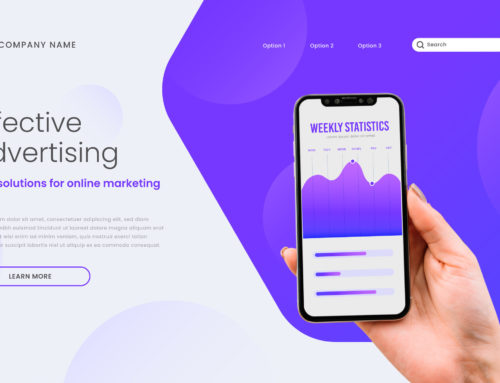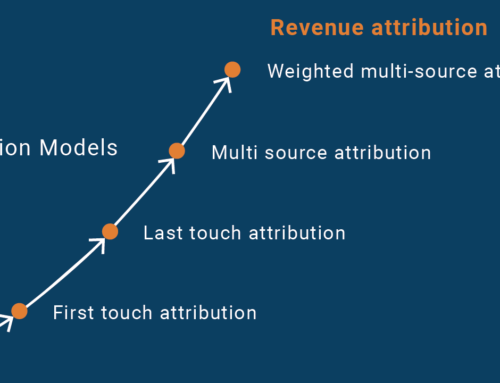Over time, some customer attrition is inevitable. Even if you deliver a stellar customer experience at a remarkable value, sometimes people’s needs and tastes change.
With that said, accepting a high customer attrition rate makes it much harder to grow year after year and stay ahead of your competitors.
Some businesses get so focused on bringing new customers through the door – understandable, seeing as it’s key early on – they never quite get around to plugging up the holes where existing customers are slipping through the cracks.
Low retention brings with it some serious pressure. You have to work hard to constantly make up for lost ground – much less expand your customer base.
 Photo Credit: Deathtostock
Photo Credit: Deathtostock
The Slightest Boost in Retention Drives Huge Improvements
Even a slight improvement in customer retention leads to serious improvements across almost every aspect of your business.
How?
If you slow down the bleeding, you can double or even triple your growth with the same customer acquisition budget as before. Because customers stick around longer, you have more opportunities to up-sell to them and increase their customer lifetime value. You also free up more time on product refinement, relationship building, and other vital aspects of business besides bringing in new customers.
Emmett and Mark Murphy estimate that just a 2% increase in customer retention has the same impact as a 10% reduction in operating costs.
What would a 10% reduction in costs mean to you? Imagine all of the opportunities you’d have to invest that money in exciting and profitable ways.
Surveying Common Customer Retention Mistakes
Understanding the importance of developing a solid customer retention strategy and keeping customers around is one thing…
But how do you do it?
Facing this “black hole” – where customers slip through your fingertips day after day – seems daunting. Do you start by revamping customer service? Your product or service? What about email marketing or something else completely?
Let’s break it down. By analyzing some of the most common red flags that result in low customer retention, you can see which ones seem familiar and start taking action to address them. This gives you a nice starting point in your battle against high attrition rates.
7. Inconsistent Customer Experience
You don’t have to offer the best customer experience in the world, but it has to be consistent.
This is something large corporations tend to do very well. Wherever you go to McDonald’s – whether it’s in New York City or Bangkok – you have a pretty good idea of what you’re getting before you order. It’s not a five-star dining experience, but there aren’t any surprises.
Is the customer experience you’re delivering similar to this?
If not – if there are significant differences between the product or services you’re providing over time – those differences might be enough to sway customers from sticking around. The same goes whenever customers deal with different members of your team. The last thing you want is to have team members making different promises to the same person.
Your first few transactions with customers cement expectations about what the business relationship will be like. Deviating too much from those expectations sets people up for nasty surprises and make it hard for them to plan for long-term relationships.
You can (and should) always experiment with your offerings and improve, but it’s probably easier to do that with new customers instead of with people who have been around for a long time. When customers are comfortable and know what to expect, they stick around for a longer time.
6. Inconsistent (or Non-Existent) Communication
Did you know that your influence in your customers’ minds deceases by about 10% for each month they don’t hear from you?
It’s true. And that makes nothing but sense in today’s hyperactive, crowded online marketplace. Most of us have a tendency to go after the bright, shiny new objects – a phenomenon that actually keeps a lot of businesses from taking off the ground. Your customers are no different.
Getting customers takes a tremendous amount of work. Collecting the data from the sale and dropping off the face of the earth does yourself a huge disservice. You miss out on great opportunities to do more business with customers, drive referrals, and cultivate lasting relationships.
Most of us can point out at least one marketer who took our money and ran. They collected our email information and didn’t follow up. Or they only follow up when they have something new to sell – a totally transparent move without any real effort to build a relationship. If you’re anything like me, those emails go deleted or ignored.
If you aren’t collecting surveys, offering loyalty discounts, email marketing, or taking other steps to stay in touch with customers and keep them top of mind, now’s a great time to start!
5. Overlooking Inactive Customers
This mistake goes hand in hand with the idea of accepting high customer attrition as inevitable. It’s one of the most dangerous missteps you can make.
You might have noticed a pattern in your business: when customers don’t buy for a while, plenty of them end up going away for good. You never hear from them again.
While this might be true for your business, that doesn’t mean you can’t do anything about it. You don’t have to chalk these people up as lost causes and double down on customer acquisition.
Remember, you’ve already poured a lot into making these customers your customers. Small, strategic actions – like engagement emails and special offers – can make a huge difference and keep a lot more of these people around.
Sometimes customers are plenty satisfied with what you’re doing. Maybe they just got busy or took the value you’re offering for granted: two completely natural things.
Don’t write off inactive customers; throw them a life preserver instead. Do what it takes to keep them around, and they’ll reward you with repeat business and sustained growth.
4. Failing to Solicit or Incorporate Customer Feedback
How well are you doing in the minds of the people who matter the most: your customers?
Sales numbers give you a nice baseline to go on, but they’re no substitute for quality insights straight out of the mouths of customers.
A lot of businesses struggle with customer retention because they’re making the same mistakes over and over again without ever realizing it. Tragically, these mistakes are often small in nature. In other words, they’re easy to fix… once you know you’re making them!
It might be time to pay some attention to how you’re soliciting customer feedback and responding to it. Feedback of all forms is a gift. Negative feedback is actually some of the most valuable feedback you can get, seeing as 96% of unhappy customers just end business relationships without ever giving a reason why.
Once you have a feedback solicitation and collection mechanism in place, consider addressing the most common complaints. A little expense now is more than justified by increased customer retention.
3. Setting Unrealistic Customer Expectations
Ever felt the urge to “hype” your product or service in order to get more people to buy?
I’m sure most of us have…
But when we give in to that temptation, we’re setting ourselves up for high attrition and disappointing customer retention rates.
Being too unrealistic about your promises might win you more customers up front, but it will make it harder to keep those customers around later. Once someone buys into your promises and becomes a customer, it won’t take them long to realize that your product or service doesn’t live up to the hype.
Your copy creates a set of expectations in people’s minds. The more realistic the expectations you set, the more likely you are to exceed them. And when you exceed expectations, that translates into an excellent customer experience and repeat business.
So take a look at your copy and sales funnel. How well are you aligning user’s expectations with the reality of what your offer can accomplish? You can still be compelling without being overly “hypey.” A few tweaks here and there will keep more people around… and happy.
2. Failing to Anticipate and Remove Roadblocks
It’s one thing to have a support team on standby for when customers have a problem or question…
But it’s a different thing altogether to take action to proactively remove roadblocks to customer satisfaction before they happen.
Some customers will let you know when they’re having a hard time. That’s a great opportunity to work with them and come up with a favorable solution and nurture the relationship. But for each customer who will contact you when they have a problem, plenty of others won’t.
They’ll just stop buying when they come up against an obstacle. They’ll switch to one of your competitors instead.
Instead of relying on customers to contact you whenever something’s wrong, you can get out in front of the problem. Identify the most common issues with your product or service. You can create a FAQ page online, a product support forum, or a series of videos demonstrating how to overcome common obstacles.
What are the common issues customers might face?
The more of these you can address – and you’re only limited by your imagination in how you want to address them – the smoother the relationship will go after someone buys from you. The more likely they’ll buy from you again.
1. Trying to Do Everything Manually
Most businesses don’t struggle with customer retention due to a lack of effort.
Most teams are simply too stressed out, taxed for resources, and distracted. They’re spread too thin.
There’s a ton for an entrepreneur to handle in any growing business – especially when that business’ presence is based online. You don’t have the time, money, and energy to do everything you’re supposed to do – day after day.
Trying to take care of all this stuff manually leads to scattered, inconsistent results. When your to-do list is a mile long and you haven’t slept in three days, it’s hard to justify pushing “customer retention” to the top.
Your time and attention are limited, and that’s okay. Instead of spending them carelessly, you can invest them into using automated systems to grow your business and keep more customers happy.
Have you invested in a good autoresponder, call tracking software, and a CRM?
All of these tools can make you much more effective at addressing customers’ needs. They free up time for you to focus on other important things – like sleep – while still serving your customers to the best of your ability. They take a bit of time and effort to set up, but the payoff is more than worth it.
Long-Term Relationships Are Key
A lot goes into getting happy customers and keeping them that way.
Sometimes it seems like it’s almost too much to worry about. It’s easier to let customers move on and focus on bringing new ones in the door instead.
But patching up those holes is worth the effort. Long-term relationships are also the most profitable ones. They’re the lifeblood of any sustainable business. Avoid the customer retention red flags above, and you’ll be well on your way to creating more of them.
Have you struggled with retaining customers? What have you tried to keep more customers around? Leave a comment below and share your experience!






